Choose Right Types of Barcodes for Publication By: Teachable Tech | April 01, 2023
By scanning books with barcodes, publishers can identify products and prices without having to manually type letters and numbers. Most book publishers and wholesalers will require barcode labels to handle books more efficiently.
Barcodes are associated with item records and store important information such as the title of the book, author, item number, call number, copy, and volume numbers.
Barcode scanners will automatically read the most common barcodes used in publication like Codabar, EAN, and Industrial 2 of 5 Font In addition, they read UPCA and UPCE as well as other common symbologies.
Types of Barcodes for Publishing
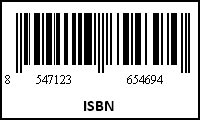
ISBN system is utilized to automate ordering and inventory systems for publishing houses, book distributors, booksellers, libraries, and retail bookstores. In ISBN 13, the barcode is standard EAN13, which encodes the ISBN number. A second barcode stores either 2 or 5 characters of extra data. ISBN 13 barcode is used to encode the price of the book.
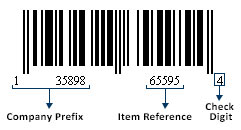
US standard is A for 12 digits and E for 6 digits. It is the common code extensively used in retail trade. Its standardization in a form that allows many organizations throughout the world to interpret the same data is its most prominent advantage. It also uses space efficiently to record the data. Its limitation is that it can only record certain lengths of numbers.
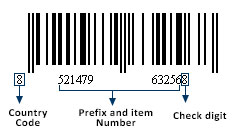
European Article Numbers are available in two varieties. EAN-8 is used to encode 8 digits, while EAN-13 digits encode 13 digits. EAN13 barcodes encode 13 characters; the first two or three digits represent the country code, which identifies the particular country in which the manufacturer is registered. EAN8 barcode includes a 2 or 3-digit country code, 4 or 5 data digits (depending on the length of the country code), and a checksum digit.
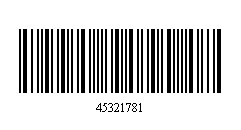
Codabar is a barcode symbology commonly used to encode publishing information. The basic 12 symbols (digits 0-9, dash, and $) are encoded using all possible combinations of one wide bar and one wide space. An additional 4 symbols (+ : /.) are encoded using 3 wide bars and no wide spaces. The four start/stop symbols (ABCD, or EN*T) are encoded using one wide bar and two wide spaces.
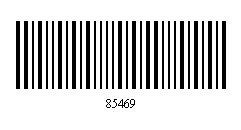
Industrial 2 of 5 symbology is called "2 of 5" because it consists of 2 thick and 3 thin bars out of a total of 5 bars. The code represents the number of the barcode and obtains something that looks like a valid result.
Choose Right Barcodes for Book Publication
| Barcode Types | Variation | Character Set/ Capacity | Application |
|---|---|---|---|
| UPC | UPC-A/UPC-E | Only Numeric: 12 | UPC-E barcode is widely used for identifying serial publications (such as journals, magazines, and newspapers) and books. |
| EAN | EAN-13/EAN-8 | Only Numeric: 13 | EAN is helpful for periodicals to publish magazines and indicate an issue number. |
| Codabar | Code 2 of 7 | 8 to 14 Character, Numbers (0-9) | Old format used in libraries (out of date but still widely used in libraries) |
| Industrial 2 of 5 Font | 2 of 5 Standard | Character, Numbers (0-9) | Wholesale, libraries International standard |
| ISBN | ISBN-13 | First three digits being “978” OR “979” and 9 digits the ISBN numbers. Final digit is the EAN/UCC calculated check digit. | An ISBN (International Standard Book Number) is a unique product identifier with 13-digit code for books developed by internationally applicable standard. |
How to get Barcode for Book Publishing
You can easily create bulk number of library barcodes by using the barcode creator software, which is useful in all libraries, book stores, and publishing houses. Publisher Barcode generator tool provides features like barcode image scanning and tracing facilities, which keep track of book details, circulated ones, sales-purchase, and books issued or returned details precisely.
You can print barcode labels with different types and sizes of labels, number sequences, and other customized information. Software allows you to print high-quality labels, including date-due reminders, new arrival labels, and best-seller labels.
Cost of Implementing a Barcode for Publishing
The cost of implementing a barcode system for a publishing business can vary depending on several factors, including the size of the business, the number of products in the inventory, the complexity of the system, and the type of equipment and software required. Here are some factors that can impact the cost of implementing a barcode system for a publishing business:
-
Barcode Scanners:
The cost of barcode scanners can vary depending on the type and quality of the scanners needed. Basic handheld scanners can range from $50 to $200, while more advanced scanners with features like wireless connectivity and long-range scanning can cost $500 or more.
-
Barcode Labels:
The cost of barcode labels will depend on the size of the inventory and the type of label required. Labels can range from a few cents to several dollars each.
-
Inventory Management Software:
Many publishing businesses use inventory management software to track their products, sales, and customer data. The cost of this software can vary depending on the features and complexity of the software. Some software solutions are free or low-cost, while others can cost thousands of dollars.
-
Implementation and Training:
Depending on the complexity of the system and the level of support required, implementation and training costs can range from a few hundred dollars to several thousand dollars.
-
Ongoing Maintenance and Support:
Ongoing maintenance and support costs can include software updates, equipment repairs, and technical support. These costs can range from a few hundred dollars to several thousand dollars per year.
-
Barcode Generation Software:
Depending on the type of barcode required, you may need to purchase barcode generation software. This software can cost anywhere from a few hundred dollars to several thousand dollars.
-
Barcode Verification Equipment:
To ensure the barcode is scannable, you may need to invest in barcode verification equipment. This equipment can cost anywhere from a few hundred dollars to several thousand dollars.
-
Printing Equipment:
Depending on the number of books to be barcoded, you may need to invest in printing equipment. This can range from a basic printer to an industrial-grade printer, which can cost several thousand dollars.
Overall, the cost of implementing a barcode system for a publishing business can range from a few thousand dollars to tens of thousands of dollars, depending on the specific needs of the business. However, many publishing businesses find that the benefits of implementing a barcode system, such as improved efficiency, accuracy, and customer service, can outweigh the initial investment.
Benefit of using Barcodes Technology in Publishing
- Reduced staff workload
- Increased accuracy and efficiency
- Improved circulation capabilities
- Faster check-in and check-out
- Easier sorting
- Improved inventory management